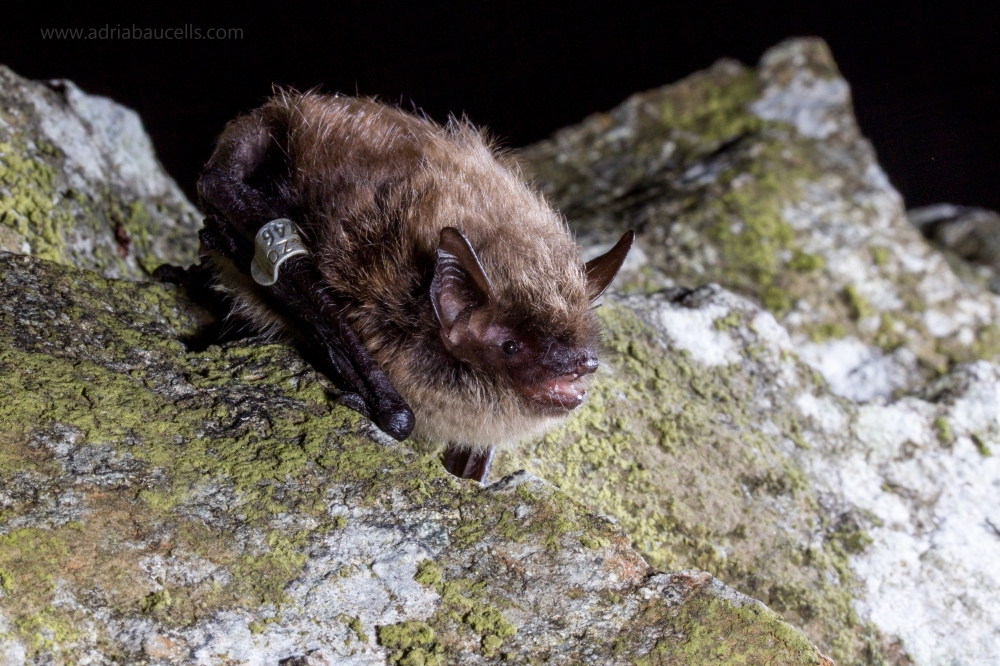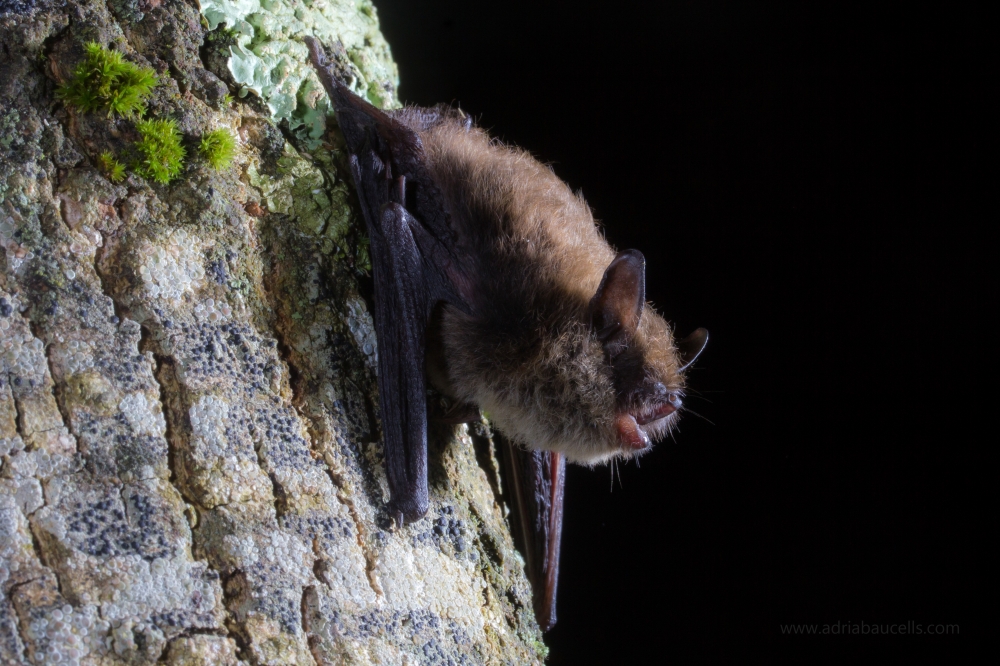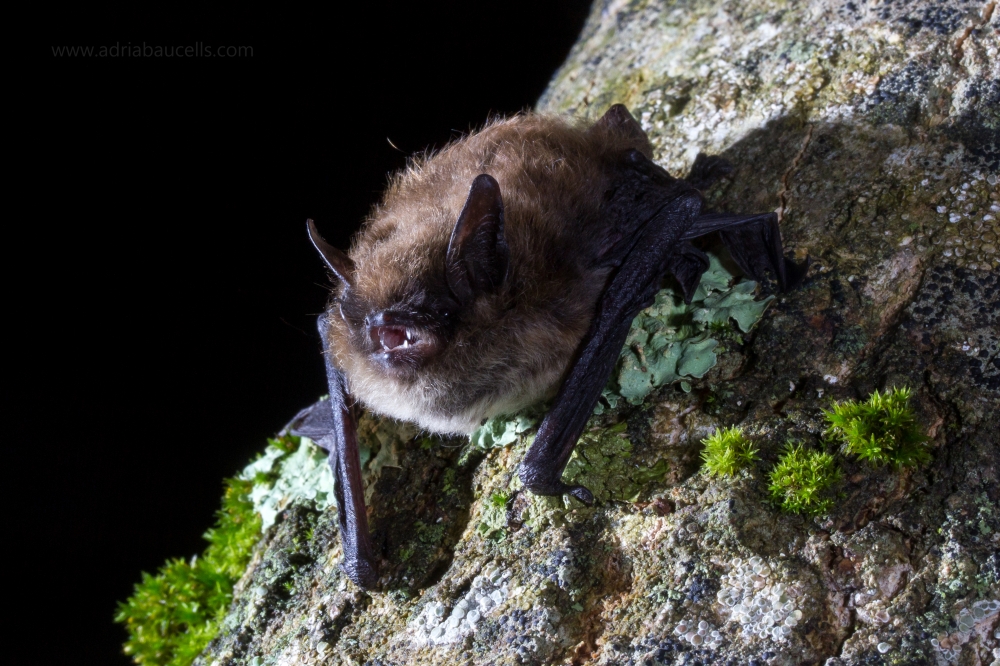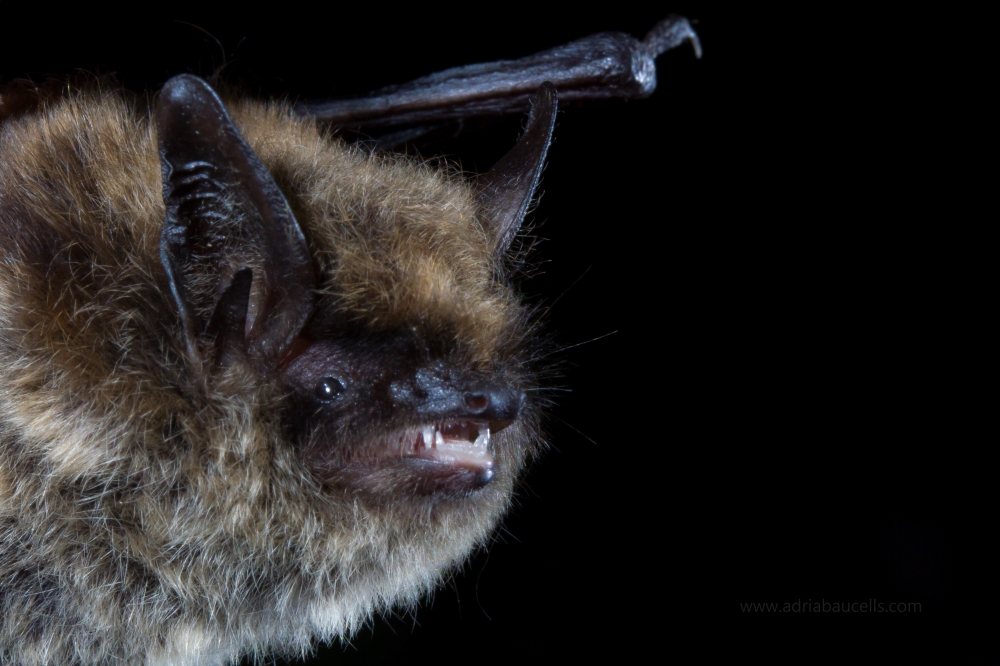Whiskered bat
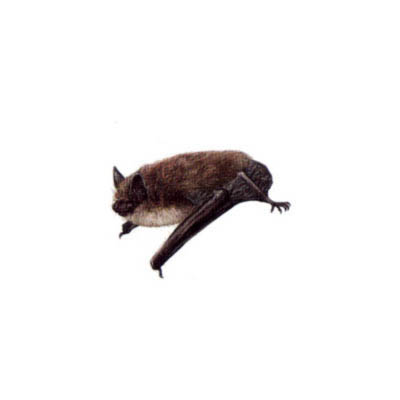
Myotis mystacinus (Kuhl, 1819)
Vespertilionidae
Least Concern
| Other names | |
|---|---|
| Catalan | Ratpenat de bigotis |
| Spanish | Murciélago ratonero bigotudo |
| English | Whiskered bat |
| French | Murin à moustaches |
| Basque | Saguzar bibotedun |
| Galician | Morcego bigotudo |
Description
One of the smallest bats in Europe, although larger than the Alcathoe whiskered bat (Myotis alcathoe), with a head and body length ranging from 35 to 48 mm, a forearm length between 32 and 36 mm, a wingspan of 190 to 220 mm, a tail that can measure between 30 and 43 mm, feet measuring 5.8 to 7.4 mm, and an approximate weight of 4 to 7 grams. The fur is usually dark brown or brown, with some individuals having reddish or golden tips on their hairs. The ventral and dorsal colouration is slightly different, with the ventral part being more grayish. Juveniles are often darker or grayer than adults. The wing membrane is black, as are the face and ears. The ears can measure between 12 and 15 mm and have a narrow and elongated tragus.
The Balkan subspecies (M. mystacinus bulgaricus) is larger, with more contrast in dorsal/ventral coloration and lighter skin. In addition, the feet are proportionally larger, up to 8.7 mm. These Balkan populations can be easily confused with Brandt's bat (Myotis brandtii) or David's mouse-eared bat (Myotis davidii). The Iberian subspecies (M. mystacinus occidentalis) is also larger and more brightly colored than the Central European populations.
Fotografies
Distribution
It is distributed throughout Europe, with its distribution limits extending to the south of Scandinavia and the northern half of the Iberian Peninsula, including the British Isles, and with some populations in mountainous areas of Morocco. It is distributed very locally in the western part of the Mediterranean and widely distributed in the Balkan Peninsula. There are confirmed sightings in the Caucasus, the western coast of Turkey, and Israel.
Roosts and phenology
Maternity colonies typically consist of 20-60 individuals, although colonies of hundreds are known, and they are usually found in tree roosts such as woodpecker holes or behind bark, or in bat boxes. In Central Europe, they can also be found in cavities in human structures. These colonies are composed only of females and their offspring and can be mixed with common pipistrelles (Pipistrellus pipistrellus) and isolated individuals of other species. Males are usually found isolated and may use a variety of roosts. In the Balkans, maternity colonies tend to be smaller, and males may be mixed in. Maternity roosts are often changed (every 10-14 days). Females usually give birth to a single pup, rarely two, in mid-June and July, and become reproductive females at about one year old. Maternity colonies disperse, at the latest, by the end of August.
It is considered a non-migratory species with migratory movements of 50 to 100 km, with only four records of movements over 150 km (the longest being 625 km in France). Mating occurs in late July or early August, and "swarming" behavior occurs in male roosts or potential winter roosts. During this period, it is usually the most abundant species at swarming sites. Unlike other species where adult males dominate swarming sites, in this species, the ratio of both sexes is more balanced. In winter, it roosts in caves, mines, and abandoned buildings, and rarely in rock crevices. During winter, individuals are often found hanging alone or in small clusters. Piles of rocks from quarries or talus slopes are believed to be important hibernation sites.
Habitat and diet
It can be found in a wide variety of habitats, typically in open or semi-open spaces with nearby wooded areas, ranging from flat landscapes to more mountainous regions (always within the altitudinal limit of trees). Quite common in horticultural areas around small settlements, as well as in wetlands with high structural complexity of vegetation. It also frequently feeds in forests, often near watercourses. Forests play an important role in the southern part of its distribution area. It can also be found in urban areas, although less frequently.
Its diet includes a wide variety of arthropods. It mainly feeds on flying insects such as diptera, hymenoptera, and lepidoptera. Although less frequently, it also feeds on beetles, arachnids, or caterpillars. It typically catches its prey in flight, but it can also capture small insects directly from vegetation. It hunts with a fast and maneuverable flight (usually at an altitude of one to six meters) near vegetation edges like forest boundaries in fields and orchards. When hunting over water, it usually prefers calm waters. In Ireland, it has been observed preferring to hunt in flooded forests and meadows. It tends to have its hunting areas about 5 km away from its roosts.
Echolocation
Its echolocation is indistinguishable from the echolocation of other small Myotis species, and that's why it is included in the phonic group Myotis 50. The calls have modulated frequencies, usually long, covering a wide range of frequencies. The calls start at high frequencies of 75 to 120 kHz and end around 28 or 30 kHz, with a duration of 3 to 6 ms.
Status
According to the IUCN Red List and the Red List of Europe 2007, Myotis mystacinus is considered Least Concern with an uncertain population trend. It is a species protected by national laws in various countries, such as the Eurobats agreement, the Bern Convention, and the European Habitats and Species Directive. It is considered an abundant species, and as of today, populations do not appear to be decreasing. However, some studies have shown that in certain locations, populations of this species are declining due to the loss of shelters.

